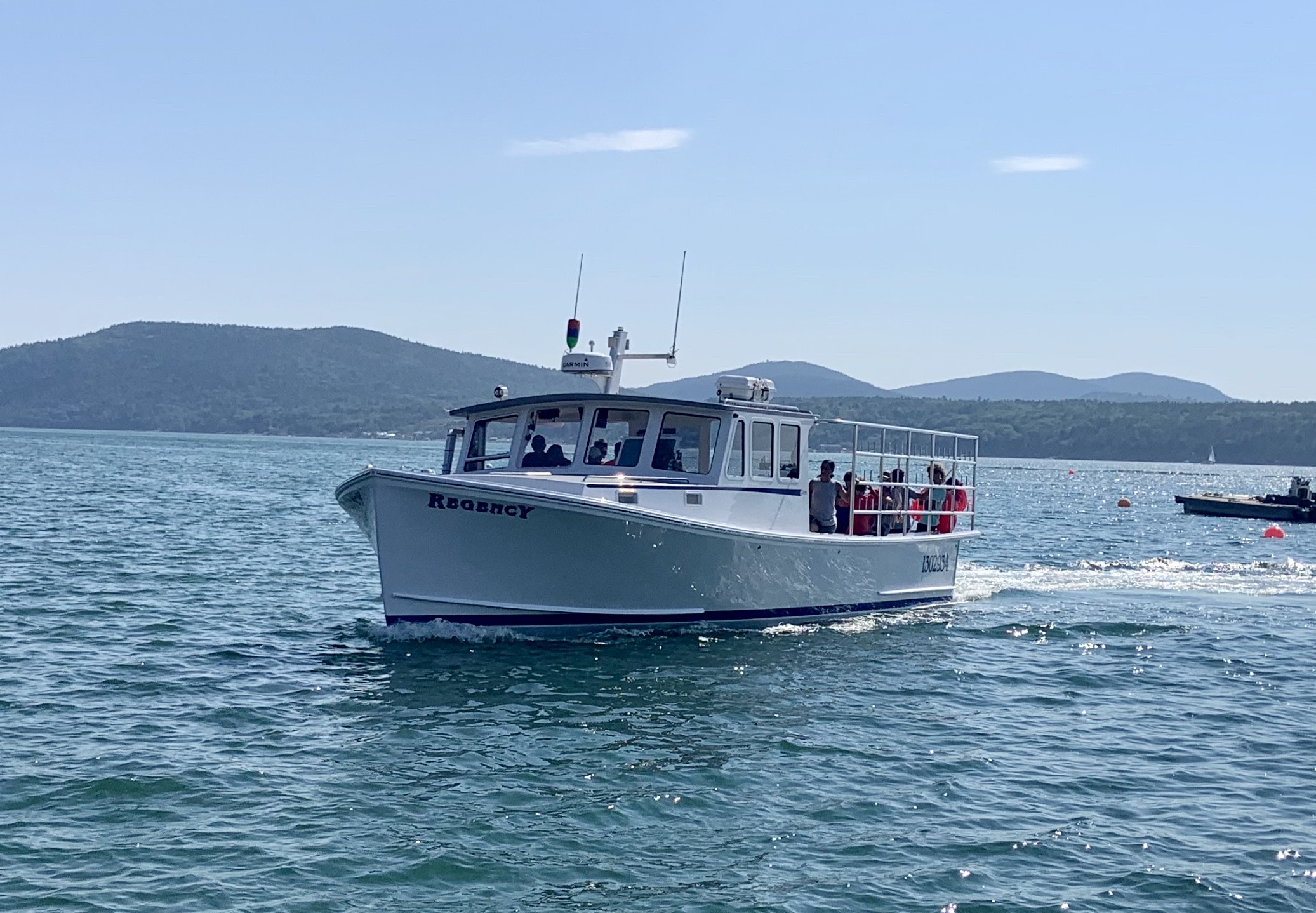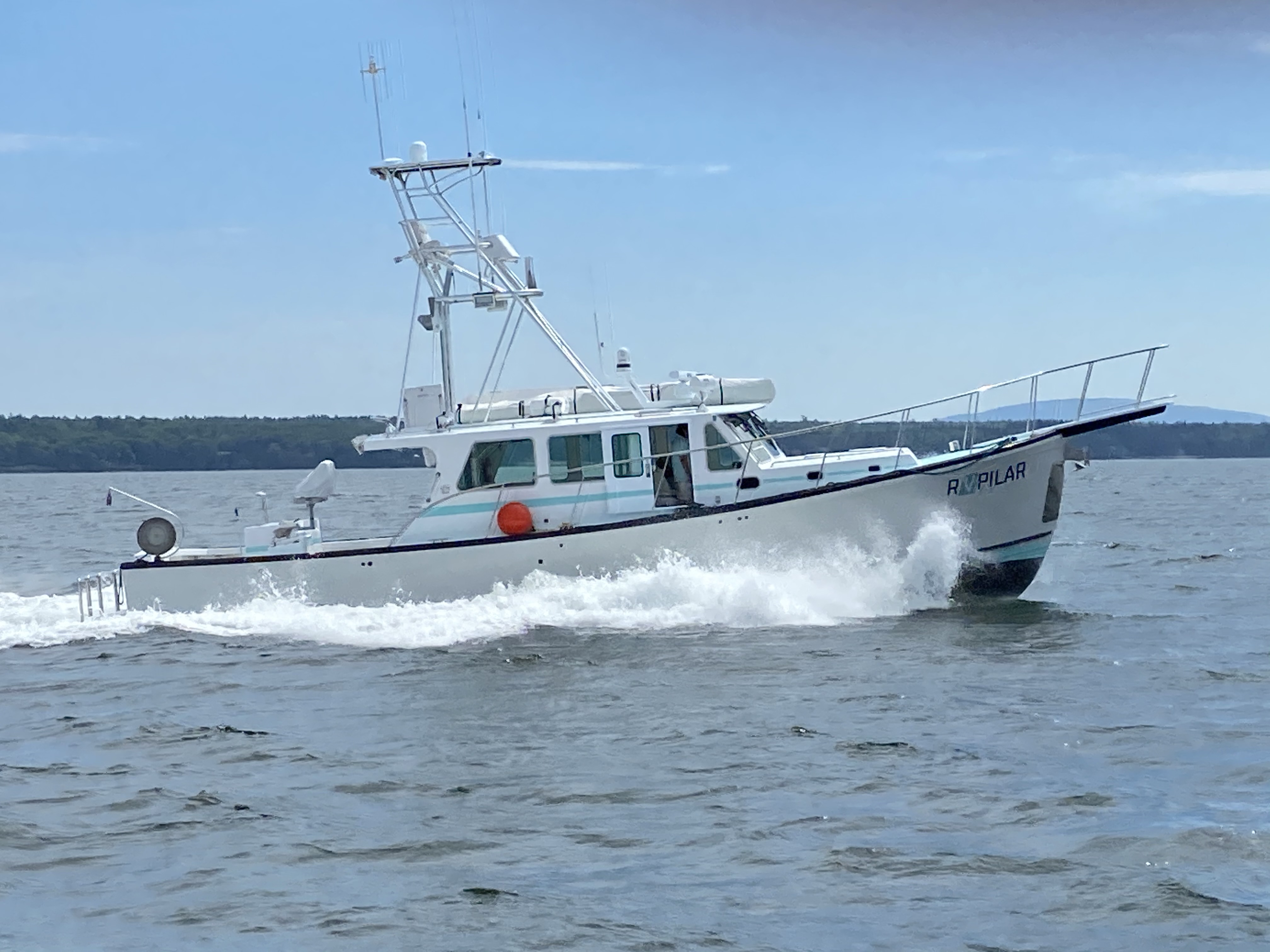Steve Wessel, owner of Wesmac Custom Boats in Surry, Maine, describes living in a time dominated by covid-19 as, “crazy. Scary. We are all gun-shy, worried and timid. But as far as the boatbuilding business goes, you can’t build boats fast enough.” Currently the building bays at Wesmac Custom Boats are full with lobster boats, tuna boats and research boats.
Two Wesmac 50' x 17' 6" lobster boats are under construction for Maine fishermen. One 50-footer with an 803-hp Cat C18 should be delivered to Stonington this winter, while the second 50-footer, with an 800-hp MAN, will go to Owls Head next spring.
Wessel says that even though this year’s price for tuna was down, “tuna fishing was good,” which probably explains the tuna boats being built. The 46' x 14' 6" Sweet Senorita was completed this summer for a New Jersey tuna fisherman. A Super Wide 46 tuna boat measuring 46' 9" x 17' 2" with accommodations for four, a shower and a head is going to Boston. She will be powered with a 1,200-hp Nanni. The largest of the tuna boats measures 54' x 17' 6" and has a pair of Cat C18s putting out a combined 1,150 hp. It’s being built for a Long Island, N.Y., fisherman.
Then there is the RV Pilar, a Wesmac Super Wide 46 for a California owner. It will be used commercially as a tuna boat, but it’s documented as an oceanographic research vessel and will be chartered out for scientific research, primarily to measure the impact of microplastics on giant tuna and other pelagic fish. They will also be using it to PSAT (pop-up satellite archival tag) bluefin tuna to better understand their movement via the Argos satellite system.
The RV Pilar will have a 40-foot green stick for tuna fishing, a hydraulic Bandit Reel and a 500-gallon bait tank. A 1,400-hp MAN powered the Pilar to 25.5 knots on sea trials. The Pilar left Wesmac Custom Boats in September for its home port of San Diego.
Wessel’s wife, Linda Greenlaw, the swordfishing skipper of the Hannah Boden (from the movie “The Perfect Storm”) and author of “All Fishermen Are Liars: True Tales From The Dry Dock Bar,” delivered the Pilar to Florida, where it was loaded on a freighter and taken to San Diego. Greenlaw wanted to take it through the Panama Canal and deliver the Pilar to San Diego herself, but says Wessel, “the boat’s owner, wouldn’t let her because, he told her, piracy was going nuts over there,” meaning the waters around Central America and Mexico.
This past summer, S.W. Boatworks in Lamoine, Maine, completed a 38' x 15' Calvin Beal design with below deck storage and an 800-hp Scania for a Perkins Cove lobsterman. A much larger lobster boat was being finished in October for a Vinalhaven, Maine, fisherman. It’s built on a 48' x 17' 6" hull that started out as a S.W. Boatworks Calvin 44 before the hull was cut in half and lengthened by 4 feet in the middle. There will be an open transom with a hydraulic tailgate. Three below-deck fish holds are for storing lobsters. Up forward are V-berths, benches and storage areas.

The Vinalhaven lobsterman’s previous boat was a 46 Wesmac. Though the new boat is only 2 feet longer, “it’s a lot wider,” says S.W. Boatworks’ Stewart Workman, going from 14' 8" on his previous boat to 17' 6" for the 48 Calvin. “He’ll be carrying more traps, be more comfortable and (the boat will be) more stable.” A 1,000-hp Cat is bolted to the engine beds.
A 34 Calvin that should be finished by late fall has a split wheelhouse and looks like a lobster boat but is being built for the state of Rhode Island as a research boat with a “big winch, gantry system, lots of hydraulics and will be towing a lot of dredges and sonar rigs,” said Workman. He adds that it resembles the Dirigo, a 38 Calvin that S.W. Boatworks built for the Maine Marine Patrol in 2013.
Here’s a type of boat that not a lot of boatyards have built. It’s a 36' x 13' 9" Calvin lobster boat for the Coast Guard that’s never going in the water. “We built it like a make-believe lobster boat, no engine, no prop, no shaft,” says Workman.
It will be bolted to a steel cradle to spend its life on Coast Guard property in Massachusetts, where it will be used for training Coast Guard crew on how to board lobster boats, go down into the fo’c’sle, and what to look for in hatches.







